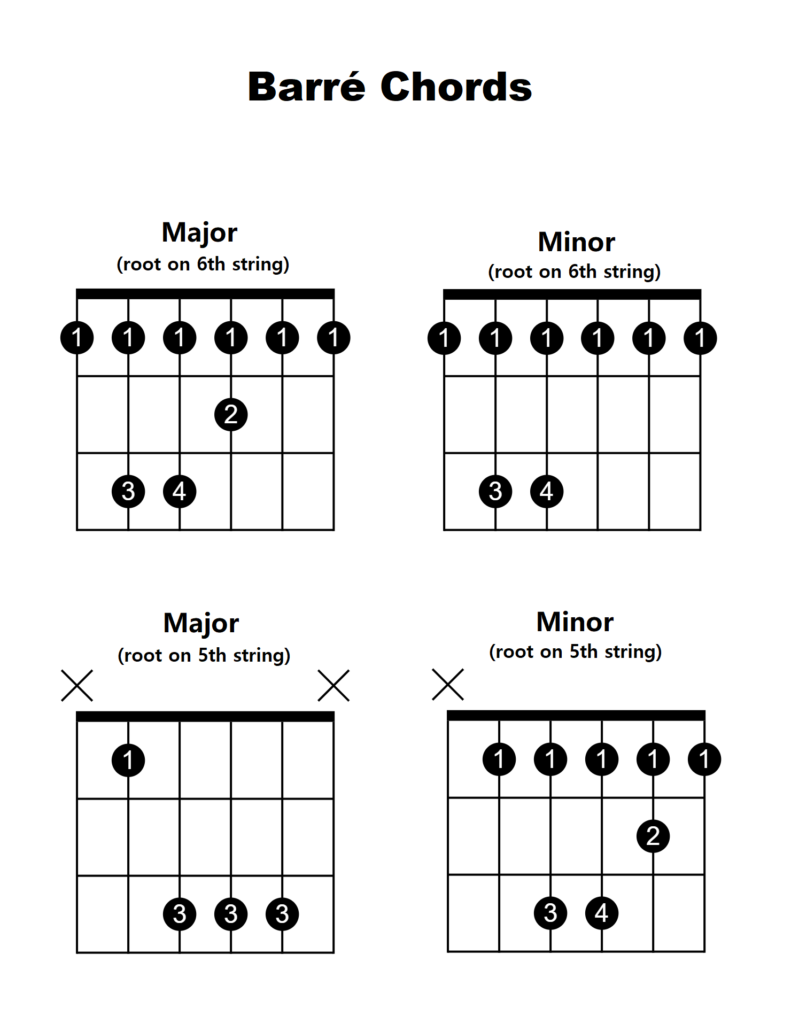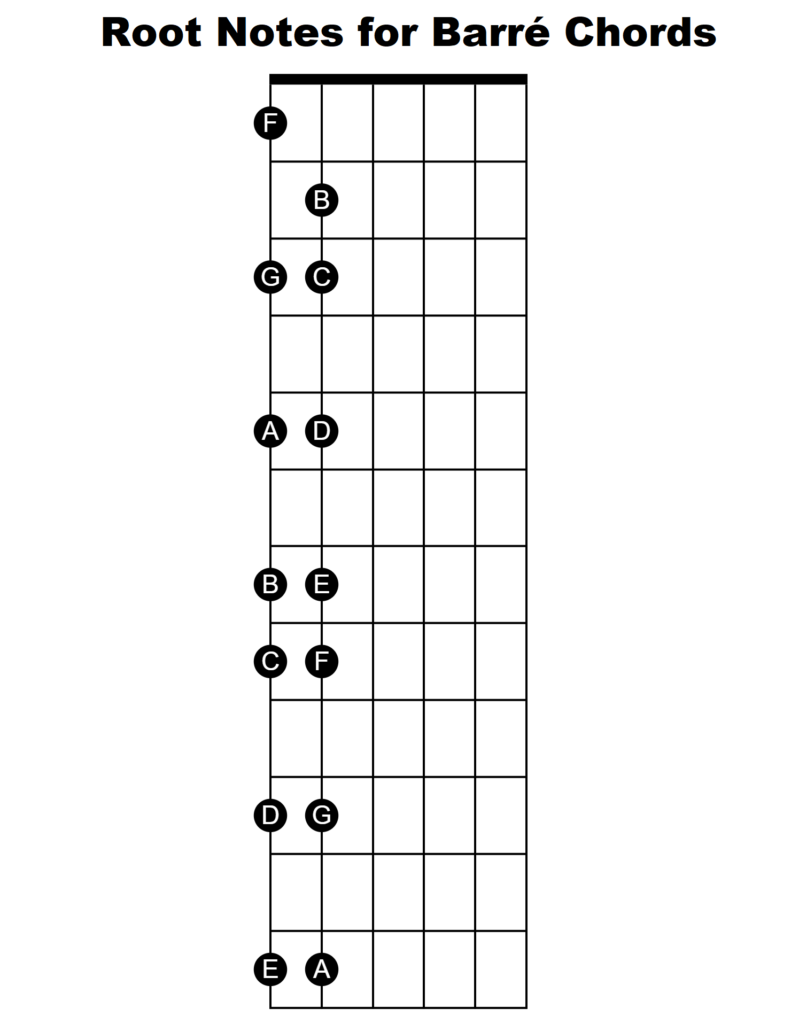We have encountered the barré technique in previous lessons when learning chords F and Gm. Now we will be barring five or six strings at once, usually with the index/pointer finger.
Notice in the chords below that the first finger (index/pointer finger) is used to cover five or six strings at once, always on the same fret.
The major chord in the bottom row uses the third finger (ring finger) to barré three strings: the second, third and fourth strings. Notice the top and bottom strings are excluded from the chord.
[br]

These chords are incredibly useful because they are movable; shifting the entire chord shape up or down one fret will produce different chords. For example, when moving the first major chord shown to the first fret on the guitar, this produces an F major chord. Move the entire chord shape up one fret, and you are playing F# major. Move the entire chord up one more fret, and you are playing G major. (This G major is another way to play the G you already know, except this one does not include any open strings, causing it to sound different.)
In order to utilize this method of producing chords, you must begin to memorize the note letter name of each fret. Begin learning the low E string (sixth string) where the first fret is F, the third fret is G, etc. Then learn the A string (fifth string) where the second fret is B, the third fret is C, etc. Below is a diagram showing the locations of the natural notes on these two strings.
[br]

[br][br]
